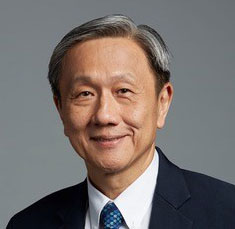Bangkok’s Siriraj Hospital has taken the 5G plunge, investing in a new cloud-based communications platform that may serve as an early medical trial for the technology’s use in the healthcare vertical.
The oldest and largest medical center in Thailand, Siriraj Hospital has complex data and communications needs. With 2,054 beds, 114 general wards and 69 operating rooms, it sees 3.4 million outpatient cases and more than 85,000 inpatient cases annually. The hospital also supports 13 research centers that produce more than 700 publications annually.
The hospital needed an IT and communications platform that could incorporate technologies such as blockchain data, artificial intelligence, virtual reality and cloud computing. So the hospital administration struck a deal with Huawei to jointly develop a cloud-based unified management system and secure 5G private network with edge computing capabilities.

“Because of the characteristics of 5G – the speed, the high reliability and the low latency – 5G as a technology fits well with healthcare,” said Dr. Prasit Watanapa, Siriraj Hospital’s dean of faculty. “For example, in the past we would waste a lot of time when we sent off images for further study and review. Sometimes we cannot wait and we have to decide to do something even if we haven’t received consultation from our specialists. But 5G solves that problem.”
The 5G platform can be harnessed across Siriraj Hospital’s operations, including its medical education programs. In the past, providing medical students with the hands-on resources they needed – including collaboration with physician mentors – was problematic. Students also required direct contact with patients and medical testing equipment.
“You cannot do this by asking the student to come to the medical school. So the hospital has turned to a video tele-education application, and with the addition of the 5G platform, its use may expand. We are now thinking if it’s possible for our medical students to sit in the same class with students from other countries, by using the technologies that have this speed, that enable the exchange of vast information, that have this low-latency rate and high reliability.” Watanapa added.
Meanwhile, the hospital’s core medical care operations have faced new challenges in the past year posed by the COVID-19 pandemic – and once again, the 5G platform comes to the rescue.
“I can say that because of the COVID-19 pandemic, it’s sped up the process of changes,” Watanapa said. “Using video telemedicine technology we can communicate with our patients – we can look after them, we can get information from them without asking them to come to the hospital. Even at the end [of the appointment] we can send off medicine to them by using our post office facility and our delivery system. So we can treat a patient and at the same time prevent them from getting the virus.”
In the near future, the 5G platform can be used to provide patients with wearable, IoT-connected devices, allowing doctors to monitor patients at home. 5G IoT connectivity also may be used in self-driving vehicles to deliver medicine to patients.
Meanwhile, Siriraj Hospital is harnessing the 5G platform for cutting-edge medical research, including the development of precision medicine in cancer therapies. Precision medicine is a therapeutic approach that allows doctors to select treatments that are most likely to help patients based on their individual physiology and a genetic understanding of their disease.
“But precision medicine means you are talking about big data to find out the genetic changes of cancer cells,” Watanapa said. “By using 5G technology however, big data can be processed within a couple of seconds.”
Overall, Watanapa sees an excellent prognosis for the hospital’s 5G platform.
“Hopefully, within a couple of years from now, we will succeed in using the 5G platform and cloud technology to improve the standard of healthcare services at our hospital, simultaneously delivering to the high standard of medical education in our faculty of medicine,” he said.
“From a wider view, Siriraj Hospital is an early case study for 5G in healthcare,” said Dimitris Mavrakis, senior research director at ABI Research. He pointed out that simpler 5G applications – for example, video teleconferencing for medical training or high-speed transmission of medical test results and imaging – will gain stronger traction in the medical industry.
“This is the feedback that the telecom industry needs to take to heart,” Mavrakis said. “Telecom providers must understand what the healthcare vertical needs and these are not necessarily use cases that start from the telecom side. They should first try to improve the daily operation services of hospitals and then build advanced use cases on top of those. Then – and only then – will 5G become a true enabler in the healthcare domain.”








